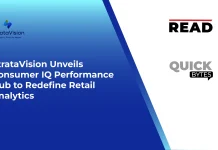Carevive Systems, Inc. a leading innovator in cancer care management software with a deep real-world evidence patient dataset, announced that it will launch the commercialization of its computerized cancer symptom management pathways. These pathways were developed through the generous support of a multi-million dollar Phase I/II Small Business Innovations Research contract funded by the National Cancer Institute. This product took over five years to develop, test, and pilot with input from an international panel of cancer symptom experts. Phase I was awarded by the NCI in 2018, and Phase II in 2020. Symptom management is a focus of the Cancer Moonshot Initiative. Carevive is the only company that applied for and received a Fast-Track Phase I/II contract award from the NCI under this research topic. Carevive STAIRS initially covers the eight most common cancer symptoms which, when severe, result in treatment interruptions, modifications, or discontinuations and hospitalizations.
Today, most patients are not monitored remotely between clinic visits. As a result, patients only contact triage lines when they are experiencing problematic symptoms. Due to short staffing and busy clinics, many patients become frustrated by long wait times, even going to the ER. When nurses or medical assistants (MAs) call patients back, they often use unstructured triage and assessment processes that require multiple calls between patients and providers, which is frustrating and inefficient.
With Carevive PROmpt®, patients are systematically monitored remotely every week, and the care team is notified electronically when patients report symptoms that may require clinical intervention. With the launch of Carevive STAIRS™, when nurses or MAs receive a notification, they can now use structured, decision-tree-based questions when following up with patients to triage and assess symptoms, and the system will offer recommended evidence-based management strategies for consideration. The Carevive STAIRS™ workflow then enables a provider to easily approve a course of action electronically, with auto-documentation of the entire encounter in the patient’s EHR.
SOURCE: PR Newswire




